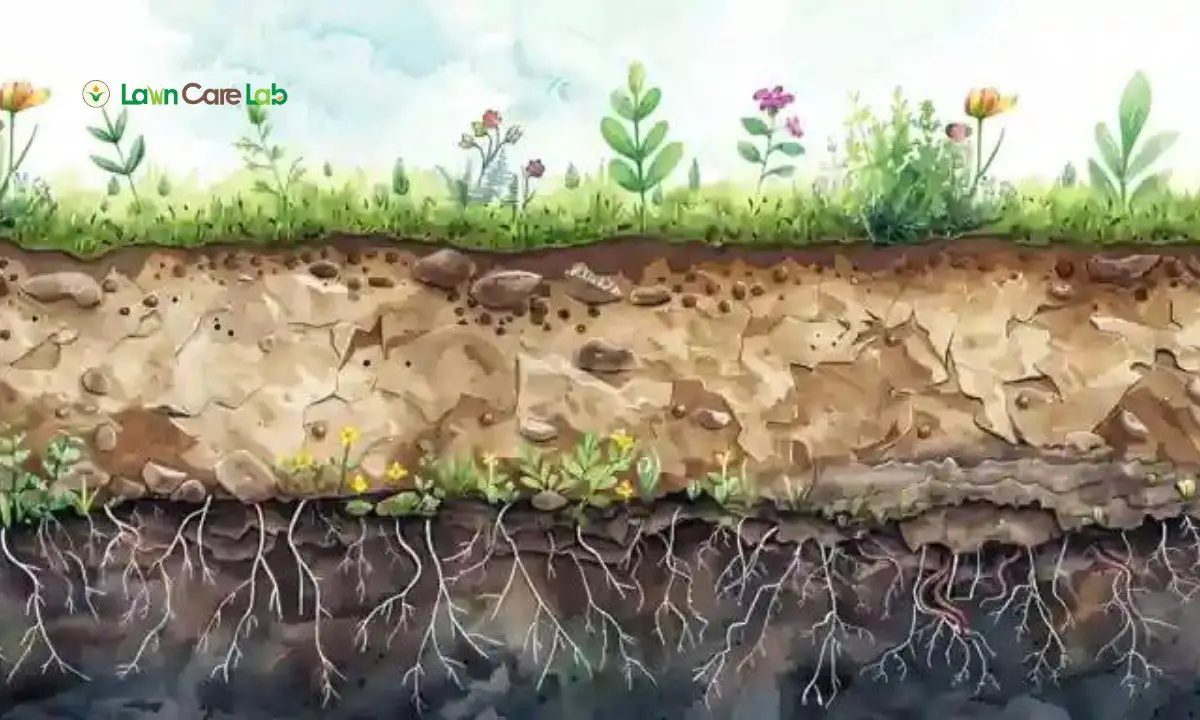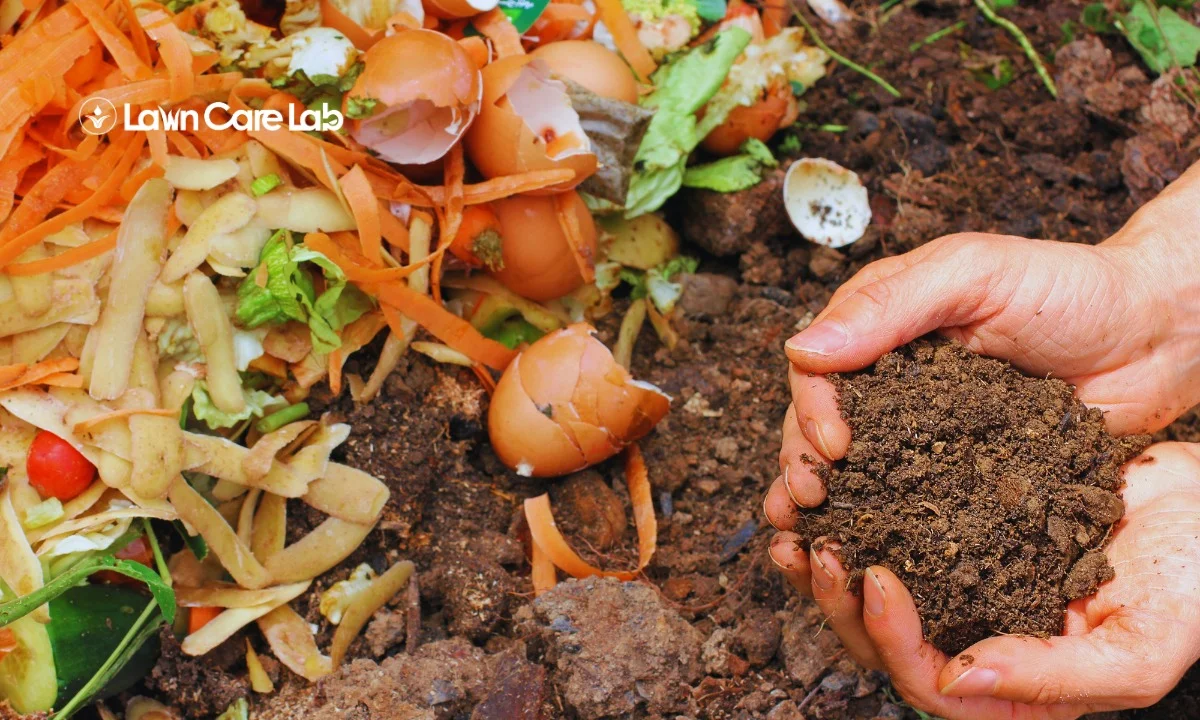Soil compaction and aeration are crucial yet often overlooked factors that significantly influence land quality, agricultural productivity, and overall soil health. Understanding the science behind these processes is essential for anyone involved in farming, gardening, or land management.
Compacted soil can severely restrict root growth, reduce water infiltration, and disrupt the delicate balance of beneficial microorganisms, leading to diminished crop yields and poor plant health. Conversely, proper soil aeration can rejuvenate compacted soil, enhancing air and water flow, promoting robust root systems, and supporting the vital microbial activity necessary for nutrient cycling.
This article will explore the mechanisms of soil compaction, analyze its causes and effects on plant growth, and provide practical strategies to mitigate its impact. Additionally, it highlights the importance of soil aeration, offering insights into various aeration techniques that can be tailored to different soil types.
Land stewards can maintain healthy, productive soils that support sustainable agricultural practices and thriving ecosystems by balancing compaction and aeration.
Table of Contents
Understanding Soil Compaction
Soil compaction significantly impacts land quality and productivity, damaging soil structure and reducing root growth and water retention.
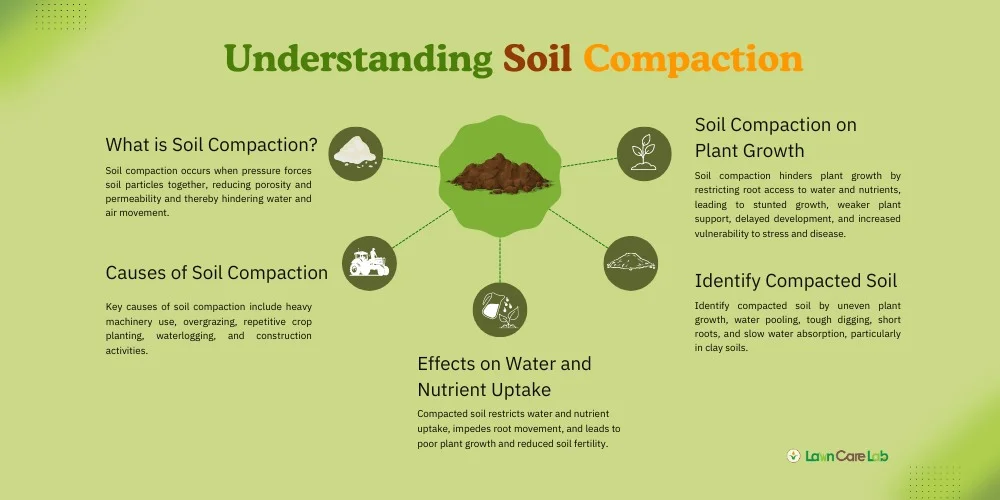
Different soil types respond variably to pressure, so farming practices must be adapted to minimize compaction. Heavy machinery and frequent tilling can compress soil excessively, harming its physical structure and disrupting beneficial microorganisms.
To prevent compaction, rotate machinery paths, use lighter equipment, and regularly monitor soil conditions to adjust practices accordingly. Implementing these strategies sustains soil health and enhances farm productivity.
What is Soil Compaction?
Soil compaction occurs when pressure forces soil particles together, reducing porosity and permeability and thereby hindering water and air movement.
This negatively affects plant growth, particularly root development, and can decrease soil fertility. Regular soil assessment and management are essential for maintaining productivity.
Causes of Soil Compaction
Soil compaction, often driven by human activities, adversely affects plant health and land productivity.
Key causes include:
- Heavy machinery usage: Driving tractors and other heavy equipment over the fields repeatedly.
- Overgrazing: Allowing too many livestock on the land can press the soil down too much.
- Repetitive crop planting: Planting the same crops over and over without changing can weaken the soil.
- Waterlogging: Too much water in the soil can prevent it from maintaining a healthy structure.
- Construction activities: Building projects can also squash the soil layers.
Awareness and proactive measures like crop rotation and using lighter machinery can help mitigate compaction.
Effects of Soil Compaction on Plant Growth
Compacted soil disrupts plant growth by limiting root access to water and nutrients, stressing plants, and reducing yields.
Poor soil structure also weakens biological processes vital for nutrient cycling and disease resistance, making plants more susceptible to stress and disease.
Maintaining well-aerated soil is crucial for healthy plant development and robust agricultural systems.
Reduced Root Penetration
Soil compaction increases density, restricting root expansion and leading to:
- Stunted Growth: Limited root spread reduces overall plant growth.
- Weak Support: Plants become unstable with weaker roots.
- Delayed Development: Slower root growth hinders plant maturity.
- Increased Stress Vulnerability: Plants struggle with environmental changes.
Preventing compaction is essential to support healthy root development.
Decreased Water and Nutrient Uptake
Compacted soil impedes water and nutrient movement, adversely affecting plant growth.
| Factor | Impact on Soil | Effect on Plants |
|---|---|---|
| Water Holding | Poor water absorption | Less water for plants |
| Nutrient Flow | Delayed nutrient supply | Nutrient-poor growth |
| Root Movement | Hard for roots to move | Plants grow poorly |
Maintaining loose, airy soil is vital for optimal water and nutrient uptake, ensuring plant health and soil fertility.
How to Identify Compacted Soil
Identifying compacted soil is essential for keeping your garden or farm healthy. By spotting the signs early and testing the soil, you can prevent future problems.
Here are some ways to recognize compacted soil:
- Visual Signs: Look for uneven growth in plants and areas where water pools on the surface.
- Hard Surface: If it’s tough to dig into the soil with regular garden tools, it might be compacted.
- Root Growth: Check the roots of your plants; if they’re short and undeveloped, the soil may be too dense.
- Soil Type: Soils with a lot of clay tend to compact more quickly.
- Water Absorption: Observe how quickly the soil absorbs water. Slow absorption indicates compaction.
Using these methods will help you stay on top of soil health, ensuring your plants have the best conditions to thrive.
The Role of Aeration in Soil Health
Soil aeration is crucial for maintaining healthy soil by improving air and water flow to plant roots. This process enhances soil structure, increasing its ability to retain water and nutrients while supporting beneficial microbial activity.
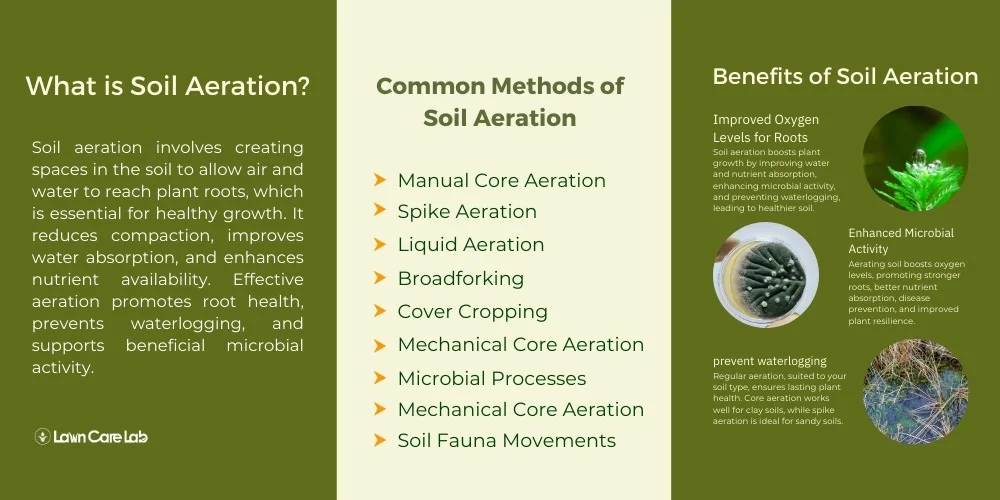
Regular aeration, tailored to your soil type, ensures long-term plant health and productivity. For example, core aeration is effective for dense clay soils, while a spike aerator may suffice for sandy soils.
What is Soil Aeration?
Soil aeration involves creating spaces in the soil to allow air and water to reach plant roots, which is essential for healthy growth. It reduces compaction, improves water absorption, and enhances nutrient availability. Effective aeration promotes root health, prevents waterlogging, and supports beneficial microbial activity.
Benefits of Soil Aeration
Soil aeration is a vital practice that significantly enhances the health and productivity of your garden. By loosening compacted soil layers, aeration facilitates better water and nutrient penetration, supporting robust plant growth.
The improved air circulation in aerated soil is crucial for the activity of beneficial microbes, which play a key role in nourishing plants and maintaining soil health.
Moreover, aeration helps to prevent waterlogging, a common issue in dense soils that can lead to root diseases and plant stress. By maintaining optimal moisture levels, aeration keeps your garden thriving.
Improved Oxygen Levels for Roots
Oxygen is vital for healthy plant roots. Aerating the soil enhances oxygen availability, promoting better root respiration, essential for nutrient absorption and growth.
Key benefits include:
- Stronger Root Growth: Increased oxygen supports robust root development.
- Better Nutrient Absorption: Improved root respiration aids in nutrient uptake.
- Disease Prevention: Adequate oxygen prevents diseases from harmful microbes in low-oxygen environments.
- Efficient Water Management: Aerated soil prevents water buildup, ensuring proper moisture levels.
- Increased Stress Resistance: Well-oxygenated roots better withstand drought and high temperatures.
Using a garden fork or aerator to break up compacted soil can lead to healthier, more resilient plants.
Enhanced Microbial Activity
Beyond improving oxygen levels for plant roots, aerating your soil also stimulates beneficial microbial activity, which is crucial for a thriving garden.
You create microhabitats that support various beneficial microbes by breaking up compacted soil. These microbes are essential for breaking down organic matter, fixing nitrogen, and making nutrients more accessible to plants.
Additionally, a healthy microbial community acts as a natural defense against harmful pathogens, further protecting your plants.
Encouraging microbial activity through aeration benefits your plants and enhances your soil’s overall health and productivity.
Common Methods of Soil Aeration
Here are five straightforward aeration techniques:
| Method | Description | Benefits | Tools/Examples |
|---|---|---|---|
| Manual Core Aeration | Involves using a hand-operated tool to remove small plugs of soil, allowing air, water, and nutrients to penetrate deeper. | Improves soil structure and root growth. | Manual Core Aerator |
| Spike Aeration | Involves punching holes in the soil with a tool to facilitate better air and water movement. | Enhances aeration, especially in less compacted soils. | Abco Tech Lawn Spike Shoes |
| Liquid Aeration | Applies a liquid solution that breaks down compact soil layers. | Loosens soil without physical disruption. | Liquid Aeration Solutions |
| Broadforking | Uses a broadfork to gently loosen soil without turning it over, preserving natural soil structure. | Maintains soil integrity while improving aeration. | Broadfork |
| Cover Cropping | Involves planting specific crops whose roots naturally loosen the soil. | Enhances soil structure and adds organic matter. | Cover Crops like clover or rye |
| Mechanical Core Aeration | Removes small soil plugs using mechanical equipment, improving air, water, and nutrient flow. | Effective for large or compacted areas. | Yard Butler Lawn Coring Aerator |
| Mechanical Spike Aeration | Uses spikes to create holes in the soil, offering a gentler approach than core aeration. | Ideal for less compacted soils; use sparingly to avoid additional compaction. | Spike Aerator Machines |
| Earthworm Activity | Worms tunnel through soil, naturally creating air channels. | Enhances soil aeration and nutrient mixing. | N/A (Encourage earthworm activity) |
| Root Growth | Plant roots break up dense soil and leave behind air spaces when they decay. | Improves soil porosity and structure over time. | Use deep-rooted plants |
| Soil Fauna Movements | Worms tunnel through the soil, naturally creating air channels. | Supports natural soil aeration processes. | N/A (Encourage soil biodiversity) |
| Freeze-Thaw Cycles | In colder climates, freezing water expands soil, creating gaps that remain after thawing. | Naturally loosens soil structure. | N/A (Natural climate process) |
| Microbial Processes | Microbes break down organic matter, feeding the soil and maintaining its porosity. | Keeps soil porous and healthy without mechanical intervention. | Incorporate organic matter into the soil |
Balancing Soil Compaction and Aeration
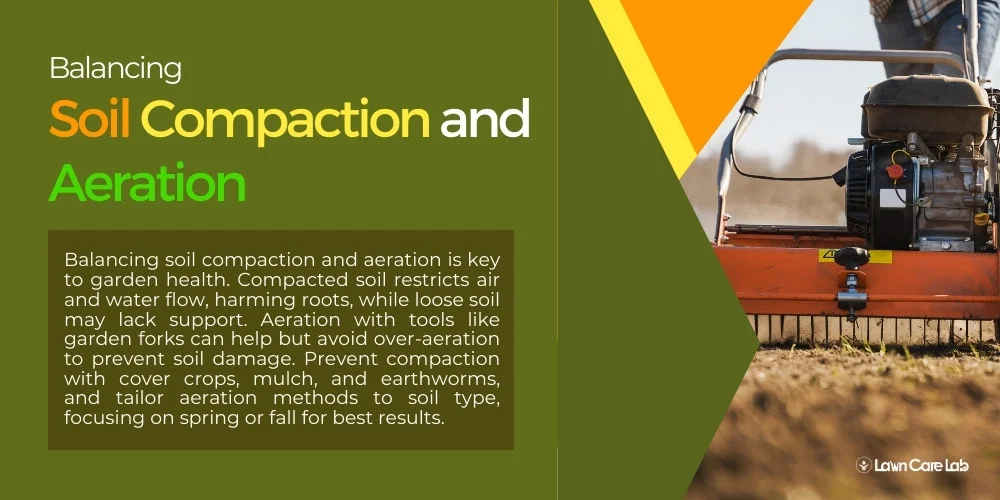
Maintaining the right balance between soil compaction and aeration is essential for a thriving garden.
Compacted soil restricts air, water, and nutrient flow, leading to poor root development and plant health, while overly loose soil may not provide sufficient support for roots.
Effective aeration techniques, such as using a garden fork or core aerator, can relieve compaction by introducing air channels and improving water infiltration. However, over-aeration can destabilize soil structure, so regular monitoring is crucial.
To prevent soil compaction, consider strategies like planting cover crops (e.g., clover or barley) to maintain soil structure, applying organic mulch to regulate moisture and temperature, and encouraging earthworm activity for natural aeration.
Regular soil testing helps guide appropriate soil management practices, such as crop rotation, conservation tillage, and the incorporation of organic materials like compost.
For different soil types, tailor your aeration approach: use core aerators for clay soils to remove soil plugs and improve infiltration, and spike aerators for sandy soils to create holes without removing soil.
Aeration is most effective in spring or fall when soil moisture levels are balanced, ensuring the process enhances soil health without causing harm.
Conclusion
To effectively aerate your garden, it’s crucial to know the type of soil you’re working with and select the right tools and times for aeration.
Aeration is key to avoiding soil compaction, which can greatly reduce plant growth by decreasing the space in the soil and making it harder for water and roots to move through.
Here’s a straightforward breakdown:
- Determine Your Soil Type: Is it clay, sandy, or loam?
- Choose the Right Tools: Consider spike aerators for minor aeration or core aerators for more intensive work.
- Time It Right: Aim for the growing seasons when plants can best recover and benefit.
- Aerate as Needed: The amount of foot traffic and the type of soil you have will dictate how often you should aerate.
- Stay Safe: Always wear proper safety gear and carefully follow the equipment’s guidelines.
By keeping these points in mind, you can maintain a healthy, vibrant garden that allows plants to flourish.
For example, using a core aerator on clay soil during the spring can help prepare your garden for robust plant growth.
- How to Create a Lawn Care Schedule for Southern Climates - October 30, 2024
- How to Use Compost Tea to Boost Lawn Growth and Soil Health - October 23, 2024
- The Best Grasses for Saltwater-Exposed Lawns: Coastal Lawn Care - October 17, 2024

